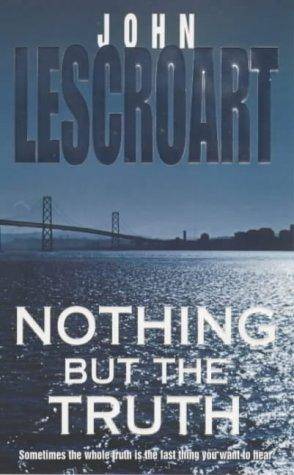(
Covering Legion of Super-Heroes vol. 2, # 310-315, 1984)
Major developments:
*Omen and the Prophet's battle against the LSH, on the sovereign planet of Khundia, has political ramifications. The Khunds fail to get them offworld before Omen's goal - an illegal and lethally dangerous Negaton bomb - is revealed. The bomb destroys Omen and the Prophet, and reveals, in the wreckage, the believed-deceased Legionnaire Lyle Norg.
*I say again, Lyle Norg comes back to life. You'd think that this would be huge.
*Computo is finally reprogrammed, Danielle Foccart is cured, and the team headquarters is rebuilt.
*Dawnstar returns to the team, accepting that Wildfire is, despite his lack of a human body, her soulmate.
*The book splits into two titles, one for the growing "direct market" of comic shops.

This will be a weird entry to write, as I'm certain to be channeling my inner 13 year-old, who turned on these funnybooks with a mercurial and hateful vengeance when they were published. Parenting a 13 year-old girl with wild mood swings and very loud opinions who takes everything way too damn seriously, I can imagine that my views in 1984 must have been pretty intemperate, but you know, even with the sober,
calmer opinions of fortysomethinghood, the writers and publishers really did make some extremely weird decisions at this time, and the resulting comics truly are not very good at all. I can see why the earlier material - just a few months earlier - thrilled me so much at the time, because they remain, demonstrably, very good comics. But man alive, did they ever hit a bad, and really strange patch in 1984. To do so when an impatient and demanding 13 year-old is risking one-fourth of his weekly allowance on them, well, that's a recipe for grudges.
In the previous installment, I explained that issues # 307-310 are a four-part story about two overpowered, deity-level villains causing all sorts of violence and volume in a big, stupid, outer space fight. One thing I'd forgotten until parenthood is that the perception of time is totally different when you're a kid. Four months is an
eternity. And so # 310 had been another terrible issue of noise, no imagination, and really bad artwork as Keith Giffen continued his new and painful experimentation in swiping. And it ends with a really stunning revelation: when Omen/Prophet gets sucked into another dimension, the other dimension spits Lyle Norg back into ours.
Now about a year before, in # 299, we briefly saw Lyle, as his successor Jacques Foccart stumbles across him in some hallucinatory, weird otherworld, but we're never sure whether the incident is a dream or fantasy. But in terms of what this means, well, it's enormous. In the 1980s, superheroes simply didn't come back from the dead like they embarrassingly do today. Especially in LSH, when the three deaths - four, if you count Luorno's third body - of heroes was something that the survivors remembered and honored. So 13 year-old me was expecting this stunner of an ending to be followed in the next issue. And it wasn't.
# 311 was another split issue to help Giffen out with his deadlines - he was a new dad, that's understandable - with one 12-page story drawn by him and a second drawn by the late Gene Colan. It didn't take me long in life to appreciate Colan a lot. When I was in high school, I thrilled to his 1970s work for Marvel on
Howard the Duck and
Tomb of Dracula. He was one of the giants. But when I was in middle school, I couldn't stand him. I probably first saw his work in the February 1982 issue of
Wonder Woman ( # 288) and hated it so much that I eventually stopped buying the comic, which had been one of my favorites since I was old enough to read on my own. Honestly, his 1980s DC work is not as strong as his 1970s Marvel work - and you sit down with
Wonder Woman # 293 and tell me I'm wrong - but while it didn't deserve the teenage spitting and hate that I roared at it, the comic still isn't very good.
Then things got worse. Okay, so in # 312, we're bound to start dealing with Lyle Norg, right? No, he gets a sentence of backhanded acknowledgement. The story is dull and unimportant - it's a two-part "police procedural" about Colossal Boy and Element Lad going undercover in the Science Police to find a blackmailer - the artwork is terrible, and there's a special announcement about something infuriating. My friends and acquaintances who grew up with British comics remember the cold childhood fury of the "exciting news inside, chums!" announcement that your favorite comic was to be canceled and merged with another title. Here's my version of it.
See, comics at the time were mainly sold on the spinner racks in drug stores and Majik Markets, and, once in a great while, you'd find back issues at the Cumberland Mall antique shows. Or, you could go by Benny the Book Trader and maybe get a back issue with a little U penciled on the first page for ten cents under cover price. The Book Trader was - in the suburbs of Atlanta - among the first stores to form the "direct market." News vendors, Eckerd Drugs or convenience stores could return unsold comics for credit against the next batch to come in but had limited control over what they received. The direct market, which came to dominate comic book sales in North America for the next thirty years, paid up front for non-returnable stock, but ordered specific quantities of what they wanted and believed would sell through.
DC and Marvel reasoned, correctly, that the growing segment of older comics readers would pay a higher price for better quality comics, printed on better paper and with higher production values, allowing superior color and without the occasional problems of badly-registered color overlays. At the time, DC's two best-selling titles were
Teen Titans and LSH, and so the company started a very weird new policy for them. After the July 1984 issue, the "main story" moved from the existing newsprint title and into the Baxter book, priced almost twice as much - a then whopping $1.25, which isn't what you want to spend when your parents, expecting you to save all three dollars of your allowance, are incapable of hearing any prices without reminding you that in the good old days, funnybooks was only a dime - and only available in the direct market, or, shops like the Book Trader, where I was not guaranteed the chance to visit very often.
The August 1984 issue was taken over by what even 13 year-old me recognized was going to be the B-Team. I don't remember how I came to understand this from house ads and letters page announcements, but while Levitz and Giffen would be plotting the stories, they would be executed by others. # 314, for example, had a main story, in which the traitor Ontiir, who'd been working for the Emerald Empress back in # 302, ran back to his bosses in the Dark Circle and got Sun Boy, Brainy and Supergirl into a fight, that was drawn by newcomers Terry Shoemaker & Karl Kesel. The 8-page backup, again inked by Kesel and drawn by veteran George Tuska, was dialogued by Mindy Newell from Levitz and Giffen's plot. The backup ran for three issues and told the story of Mysa the White Witch's origin.
The plan was for twelve months in this format: new stories in both the slightly retitled
Tales of the Legion of Super-Heroes (volume 2) # 314-325, and the Baxter paper, direct market
Legion of Super-Heroes (Volume 3) # 1-12. After the first year,
Tales would become a reprint book, and # 326 would reprint
LSH (Volume 3) # 1. Does that make any sense? Believe it or not, it lasted for a good while, since so many people were still buying their comics from newsstands and quickie-marts. The reprints in Volume 2 continued until the end of 1987, and the final issue of
Tales, # 354, reprinted
LSH (Volume 3) # 29.
As an adult, organizing the comics into a reading order is slightly problematic, since the ongoing stories only wink and wave at each other while moving along. To be honest, I'm not as familiar with
Tales as I am Volume 3, because when, years later, toward the end of high school, when I started going back to find all the books that I missed, I only wanted Volume 3. The twelve issues of
Tales just didn't seem to count. I eventually bought most of them, but can't honestly claim that I ever really cared that much, even during those times when my passion for Legion resumed in a big way.
And Lyle? Dude comes back from the dead in # 310 and finally gets about three pages of acknowledgement across # 314 and # 315. He's mopey, wants to be left alone, and wishes that he was still resting in peace. What in the world was the point of bringing him back to life - if that's what's happened - if that's all that Levitz and Giffen wanted to do with him? It is really, really weird.
But I never saw it at the time. I was hating the artwork after seven months of lousy stories and pictures, and this instantly-abandoned (or so it seemed) subplot about Lyle offended the bejezus out of me as a kid, and now they were taking the REAL Legion to some stores where I couldn't always go and charging more for it and leaving me with leftovers from minor leaguers. I dropped the book in the blazing, eternal fury of a pissed-off eighth-grader.
Plus, I'd found
Uncanny X-Men, which I liked better.
Next time, again, the reading order is tricky and fumbling, but I think it works best if I look at the first five issues of the Baxter book, the third Annual, and
Tales # 316.





















